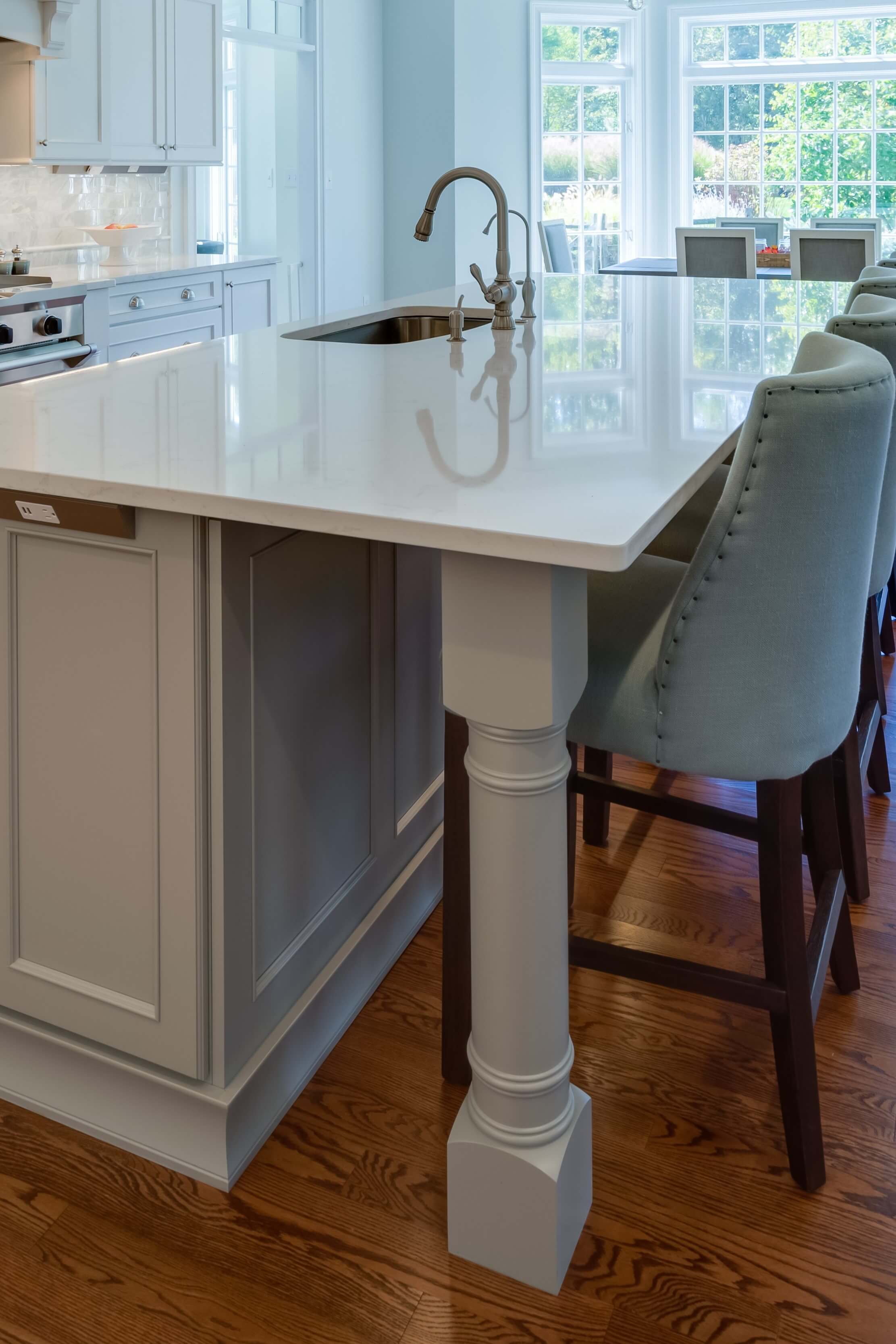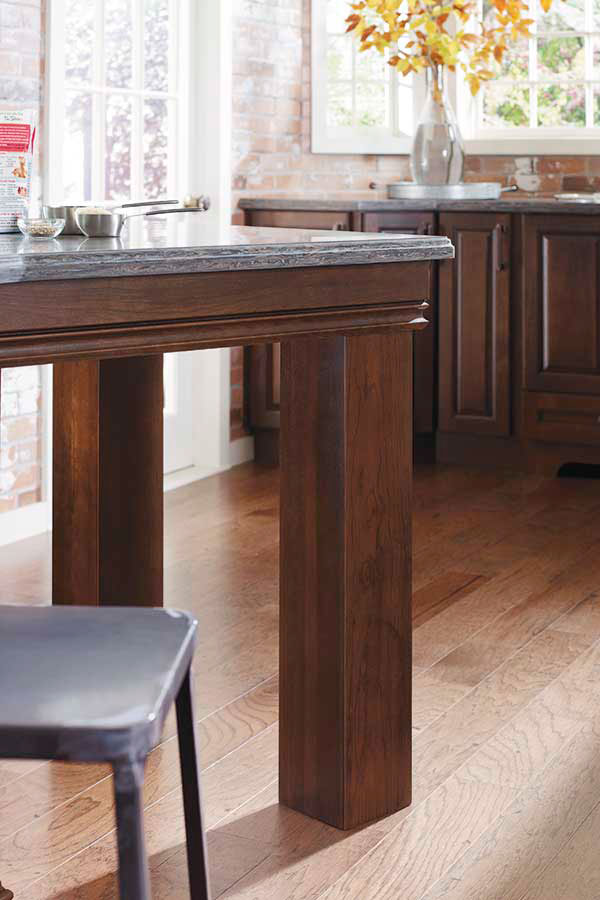Update Your Kitchen's Aesthetic with Costs Legs For Kitchen Island
Update Your Kitchen's Aesthetic with Costs Legs For Kitchen Island
Blog Article
Trick Factors To Consider for Discovering the very best Legs For Cooking Area Island for Your Style
When selecting the ideal legs for your kitchen area island, a number of essential factors to consider come right into play that can significantly affect both performance and visual appeals. The option of elevation, product, and design have to straighten with your overall cooking area design to ensure a harmonious appearance.
Determine Your Design Choice
When picking the excellent legs for your cooking area island,Establishing your design preference is important. The legs of your kitchen area island not only offer a useful objective but also add dramatically to the general aesthetic of the space. Determining your layout style-- be it modern, rustic, traditional, or industrial-- is necessary.
For a modern-day kitchen area, take into consideration sleek, minimalistic legs that match tidy lines and open spaces. Conventional kitchen areas often favor transformed or luxuriant legs, which can add a touch of sophistication and refinement.
In addition, take into consideration the elevation and percentage of the legs in relationship to the island's surface area. This makes sure the aesthetic balance and performance required for everyday usage. Assessing the existing components in your cooking area, such as cabinetry and devices, can additionally lead your decision, making certain cohesiveness in design. Ultimately, your style choice will certainly influence not just the selection of legs however likewise the overall consistency of your kitchen area's design.
Choose the Right Product
Choosing the right product for your kitchen area island legs is pivotal in making certain both longevity and aesthetic allure. Different products provide distinctive advantages, and the selection typically reflects your style choices and practical needs.
Wood is a preferred choice, supplying heat and adaptability. It can be tarnished or painted to match your cooking area decor, making it versatile to numerous styles, from rustic to contemporary. Nonetheless, wood may call for regular maintenance to protect its look and integrity.

If you seek an one-of-a-kind touch, think about acrylic or glass products. They can create an illusion of room and lightness in your kitchen area, making them an excellent option for smaller sized areas - Legs For Kitchen Island. Nevertheless, these alternatives may need mindful handling and maintenance to avoid scrapes.
Eventually, the product you pick should align with your kitchen area's total layout, guaranteeing that the legs serve both decorative and functional functions.
Think About Elevation and Percentages
When making a kitchen island, height and proportions play an important function in making certain capability and convenience. The conventional height for a kitchen area island usually ranges from 36 to 42 inches, lining up with traditional counter heights or bar heights, specifically. This measurement is crucial for harmonizing with surrounding countertops and stools, allowing simplicity of usage throughout dish preparation and social interactions.
Additionally, the island's percentages have to enhance the general kitchen layout. A well-proportioned island needs to not bewilder the space; rather, it needs to produce a balanced visual. Think about the ratio in between the island's width and length, guaranteeing it offers sufficient surface location without crowding the kitchen area. A general standard is to preserve a size of 24 to 48 inches, assisting in movement and access.
In addition, the height of the legs or base can affect the aesthetic allure and performance. Taller legs might lend a much more modern-day, airy feeling, while shorter ones can evoke a typical, grounded appearance. Inevitably, thoroughly taking into consideration height and proportions will certainly cause a kitchen island that is both aesthetically enticing and functionally efficient, enhancing the general layout of the space.
Assess Stability and Toughness
A kitchen island's legs should not only match its elevation and percentages but likewise supply ample security and longevity to sustain day-to-day activities. The legs are necessary to the total performance of the island, as they birth the weight of the countertop and any type of added loads, such as appliances or food preparation tasks.
When assessing security, it is crucial to consider the leg design and material. For example, durable metal or solid wood legs often offer exceptional strength compared to lighter products like crafted timber or plastic. In addition, a broader base can improve stability, reducing the threat of tottering or tipping during usage.
Toughness is similarly essential; the legs ought to stand up to damage from daily use. Take into consideration surfaces that safeguard against scrapes, dents, and dampness, particularly in a kitchen area setting. In addition, assess the quality of building and construction, such as fastenings and joints, which can dramatically affect the legs' long-term efficiency.
Inevitably, purchasing well-crafted legs that focus on security and toughness will ensure your cooking area island remains a reliable office for several years to find, boosting your culinary experiences while preserving visual charm.
Aspect in Upkeep and Care
Upkeep and treatment are crucial factors to consider for guaranteeing the longevity and performance of cooking area island legs. When selecting legs, it is necessary to evaluate the materials utilized, as various alternatives require varying levels of maintenance. Wooden legs may need regular refinishing or securing to stop dampness damages and scrapes, while steel legs might need routine polishing to preserve their luster and avoid visite site rust.
Furthermore, the surface related to the legs can influence maintenance needs. A high-gloss covering may be simpler to clean but can reveal scratches and fingerprints more readily than a matte finish. It is suggested to pick products and coatings that match your lifestyle; for example, if you regularly organize events, go with resilient materials that can hold up against damage.
Furthermore, consider the cleansing procedure associated with maintaining these legs. Smooth surface areas typically require marginal initiative, while elaborate layouts might accumulate dirt and gunk, requiring important source even more labor-intensive cleaning techniques. Legs For Kitchen Island. Eventually, considering the upkeep and treatment needed for your picked kitchen area island legs will not only boost their aesthetic charm yet also guarantee their practical integrity with time
Final Thought
To conclude, choosing the optimal legs for a kitchen area link island necessitates cautious factor to consider of different factors, including layout style, material option, maintenance, security, and elevation. Each element plays a vital role in making sure that the legs not just enhance the visual charm of the cooking area but likewise give the necessary support and sturdiness for day-to-day usage. A well-informed decision will eventually add to a functional and visually pleasing kitchen atmosphere.
The legs of your kitchen area island not just offer a useful objective but also contribute substantially to the general aesthetic of the room.Upkeep and treatment are critical considerations for guaranteeing the durability and performance of kitchen area island legs. Wooden legs may require periodic refinishing or sealing to prevent moisture damage and scrapes, while steel legs might require regular polishing to maintain their sparkle and stop corrosion.
Ultimately, factoring in the upkeep and care required for your chosen kitchen island legs will certainly not just improve their aesthetic appeal but also guarantee their useful stability over time.

Report this page